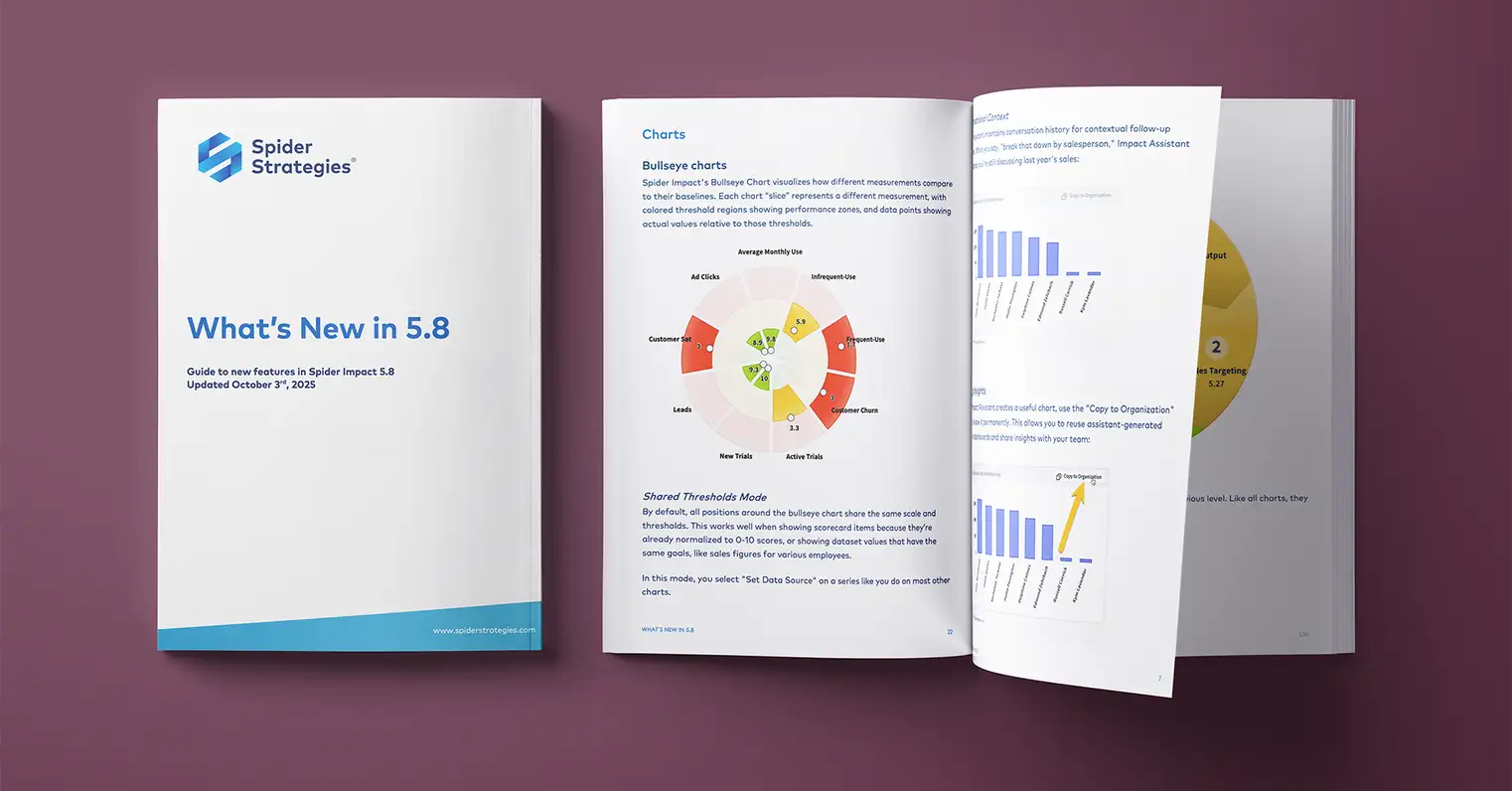Driving Business Innovation with Embedded Analytics

No matter the industry, effectively using data is integral to business success. Organizations often turn to business intelligence software to gather and analyze data for decision-making, but traditional business (BI) intelligence software can be overkill for people who just want a quick answer to a simple question. To address this, many companies are supplementing their BI with embedded analytics.
What is embedded analytics, and why is it important? Embedded analytics is all about integrating data analytic capabilities directly into an organization’s workflows, SaaS applications, products, and other key resources. With embedded analytics tools, you discover insights from data without leaving what you’re doing to use a separate application. It allows everyone—from your employees and suppliers, to customers and partners—to get the information they need when they need it.
Ultimately, embedded analytics empowers your business to make better-informed decisions faster. Learn more about the concept and how it enables organizations to be more data-driven when planning and executing objectives.
How Embedded Analytics Drives Business Success
Because embedded analytics tools are incorporated seamlessly into business applications and processes, they blend into the style and branding of an application. This allows for more convenient access to data visualizations and advanced analytics within everyday work. As a result, embedded analytics can provide organizations with the following benefits that drive success:
Encourages Data-Driven Decision Making
Embedded analytics is often deployed into a variety of systems across an organization. This means that it powers data-driven insights in all departments—from marketing and production, to the accounting and sales teams—helping them to make better decisions without changing their existing workflows.
Boosts Productivity and Saves Time
Embedded analytics supplements, rather than replaces, existing systems. Employees are able to answer questions directly in software that they already use, saving them the time it would take to switch to a dedicated business intelligence app. Staying in the flow of what they’re working on keeps them productive and avoids distractions.
Improves Operational Efficiency
When compared with traditional business intelligence (BI), embedded analytics prevents you from moving between a separate resource for data analysis and the applications used for conducting tasks—it’s all a part of one interface. As such, embedded analytics tends to increase efficiency.
Embedded analytics is also self-service analytics. This refers to the democratization of data where all business users—not just professionals skilled in data reporting—can access, analyze, and share insights to drive decisions.
Enables Proactive Problem-Solving and Risk Mitigation
Another issue that embedded analytics fixes is the loss of context. Toggling back and forth between a separate, more traditional BI solution and your workflows can make it difficult to see how these elements relate in real-time. When data insights are brought into your applications, you gain the context to solve problems swiftly and can detect and contain potential risks before they become larger concerns.
Allows for Branded Insights
Aesthetics may not be the first thing that comes to mind with data analytics, but it can be helpful when showcasing insights to customers. Using embedded analytics, you can customize dashboards, graphs, charts, and other visualizations to adapt the information to any application, as well as brand the data with your logo and company colors. This seemingly small touch can go a long way toward promoting more effective customer engagement.
How can embedded analytics be used in organizations?
Understanding how embedded analytics works in practice isn’t tough, but it helps to look at real-world examples. The following details some use cases for embedded analytics tools:
Websites
Business intelligence platforms that offer embedded analytics are often used on public-facing websites. Customer experience is dramatically improved when they can check the stock of products in real-time. Community stakeholders can see the progress on local government projects in an embedded dashboard. Utilities can automate their display of local power outages. An embedded analytics platform brings your website to life with real, interactive data.
Internal Applications and Processes
Your analysts will take advantage of intuitive interfaces to make quick, informed decisions. They’ll find it much easier to interpret data correlations and machine learning insights when analytics are embedded directly into their CRM and BI applications. Single sign-on makes the employee experience even more seamless, allowing them to drill from embedded analytics directly into your full-featured business intelligence tool.
External Portals
Embedded analytics is not only advantageous for your organization—they can also be used by your customers and partners. When these stakeholders get a curated glimpse into your business intelligence data, they can provide feedback to help you innovate and streamline processes. What’s more, your relationships with these stakeholders are likely to grow stronger.
Giving your external stakeholders access to your data via an API is helpful. It’s even better to also provide embed BI so they don’t have to waste developer resources writing all of their own integrations.
Task-Focused Mini Apps
Organizations can create entire software products based on embedded analytics that include forms, data visualizations, and dashboards. These mini applications provide a tailored user experiences with user-friendly flows built around an organization’s existing internal products. Some embedded analytics platforms make it easy to build these mini apps with drag-and-drop ease of use.
Challenges of Implementing Embedded Analytics
In today’s business world, embedded analytics has gone beyond an amenity that helps your company gain an advantage over competitors—it’s often an essential solution. As with any organizational change, however, you may encounter difficulties when first integrating embedded analytics. Businesses should be aware of the following challenges:
- Lack of skilled resources: Supplementing conventional business intelligence with embedded analytics requires the proper resources like IT and training staff.
- Data quality and governance issues: Organizations should always be aware of data privacy laws and regulations that impact how they handle and share information.
- Security and privacy concerns: Throughout the entire integration process, you’ll need to think about how to protect data against cybersecurity threats and ensure sensitive information is guarded with the proper privacy measures.
- Integration with existing systems: It’s always more difficult to integrate embedded analytics into some systems than others, which makes planning and budgeting difficult.
- Resistance to change and lack of buy-in from stakeholders: It can be hard for stakeholders to accept any change, so you should start educating them as early as possible in the process.
Depending on your industry , there are most likely other embedded analytics challenges and considerations. Your objectives, the kinds of products undergoing data integration, and your intended end-users are some aspects to take into account when weighing the pros and cons of embedded analytics for your organization.
Strategies for Implementing Embedded Analytics
Choosing the right vendor when adding embedded analytics is crucial, but this shouldn’t be the only factor in your decision. Once you’re ready to implement an embedded analytics tool at your company, remember the following strategies for success:
- Assess business needs: What problems will embedded analytics help you solve? What objectives will these tools enable you to achieve?
- Identify data sources: What data sets do you need? What obstacles might you encounter with the integration because of these sources?
- Evaluate existing analytics tools and technologies: What is your existing level of analytics experience, and what does your business intelligence strategy look like? What kinds of changes to your current data analytics process are necessary following the switch?
- Select the right data visualization techniques: What visualizations will be most effective in displaying data for end-users? How might you customize dashboards to better reflect your branding?
- Address data quality and governance: What processes have you developed to manage embedded analytics? Will this new handling of data comply with government and industry regulations?
- Establish key performance indicators (KPIs) and metrics: How will you track your progress with the integration? What KPIs will most help you gauge the efficacy of embedded analytics?
- Build dashboards and reports: How will you craft dashboards to enhance value for end-users? What visualizations, such as graphs and charts, can you include with reporting on the embedded analytics platform?
- Train and educate end-users on using your embedded analytics tool: How well do employees, customers, partners, and stakeholders understand embedded analytics? What resources have you created to help train them on these tools?
Best Practices for Maximizing the Value of Embedded Analytics
From interactive dashboards to actionable insights, embedded analytics capabilities deliver numerous advantages for making data-driven decisions. Additionally, the right approach with embedded analytics can do more than augment user experience and customer satisfaction; it can allow your business to accomplish broad, strategic goals and potentially attain new revenue streams. To optimize the benefits of embedded analytics, take these steps:
Engage with Stakeholders and End-Users
You want stakeholders to understand that embedded analytics brings them value just as much as it does for your teams. When introducing the approach, be sure to educate stakeholders on how to read insights and what this information means for them.
Start Small and Scale Gradually
Mass integration can not only be expensive—it also opens the door to more errors that might minimize the value embedded analytics brings to your business. Instead, begin with a pilot project designed to help you achieve a short-term objective. From there, scale gradually until embedded analytics becomes commonplace.
Focus on User Adoption and Training
Without proper training, embedded analytics may become more of a setback than an asset for your organization. Just as you want to engage with all stakeholders, you need to train employees to ensure all are thoroughly adjusted to the new process. Above all, training makes the transition to using embedded analytics much smoother.
Factor in Data Quality and Governance
Embedded analytics is a big change in itself, but the integration may impact other data management practices. Always keep in mind that this new approach to analytics fundamentally changes the visibility of your data, so it’s vital to make sure your handling of information abides by government and industry regulations to avoid fines or legal trouble.
Offer Continuous Support and Maintenance
The switch to embedded analytics isn’t a one-and-done task. You’ll need to monitor progress and check in with employees and stakeholders to see how they’re responding to the change. Consistent support will not only help you optimize embedded analytics, but also shows how committed you are to the solution, which can drive more adoption from your team.
Keep Up with New Developments in Data Analysis
Technology is rapidly developing—just as your business gets accustomed to one technology for data analytics, an innovative technique is sure to follow. Within the context of embedded analytics, staying on top of these new developments can help you modify your approach to reading and evaluating information to make the most of your insights.
Gain a Strategic Edge with Spider Impact’s Embedded Analytics Capabilities
Data can be a catalyst for significant business growth, and your organization can capitalize on these insights to turn goals into realities. Embedded analytics empowers everyone to make more effective use of your data, which accelerates your ability to make better decisions.
For an embedded analytics solution that puts your business at a competitive advantage, consider Spider Impact . Our cloud-based software features powerful embedded analytics with a wide variety of data integrations . You can embed live dashboards into public-facing websites, internal portals, or other SaaS software products. Our interactive forms have customizable user interfaces that are built with drag-and-drop functionality. They can also be embedded just about anywhere, allowing you to create single-task mini apps, or even just collect data in a survey.
Many customers favor our data visualizations over even the largest BI tools. Our pre-built infographic widgets save time and look great. Our data governance and security ensures you always know exactly who has access to your data.
The key features of Spider Impact all contribute to one overarching goal—helping users make data-driven decisions that lead to improvements in performance and productivity. Additionally, we offer our software both as a SaaS subscription and a self-hosted on-premises model, which is often the preferred method for government and security organizations.
Contact us today to learn more about our flexible pricing options and how Spider Impact can transform your organization. You can also sign up today for a free trial or demo today.
Demo then Free Trial
Schedule a personalized tour of Spider Impact, then start your free 30-day trial with your data.






